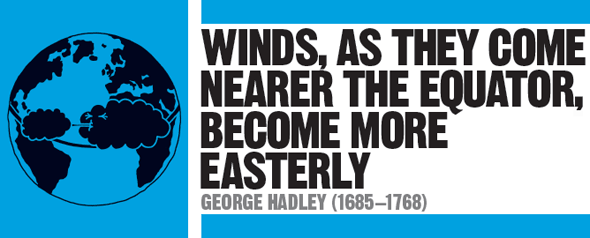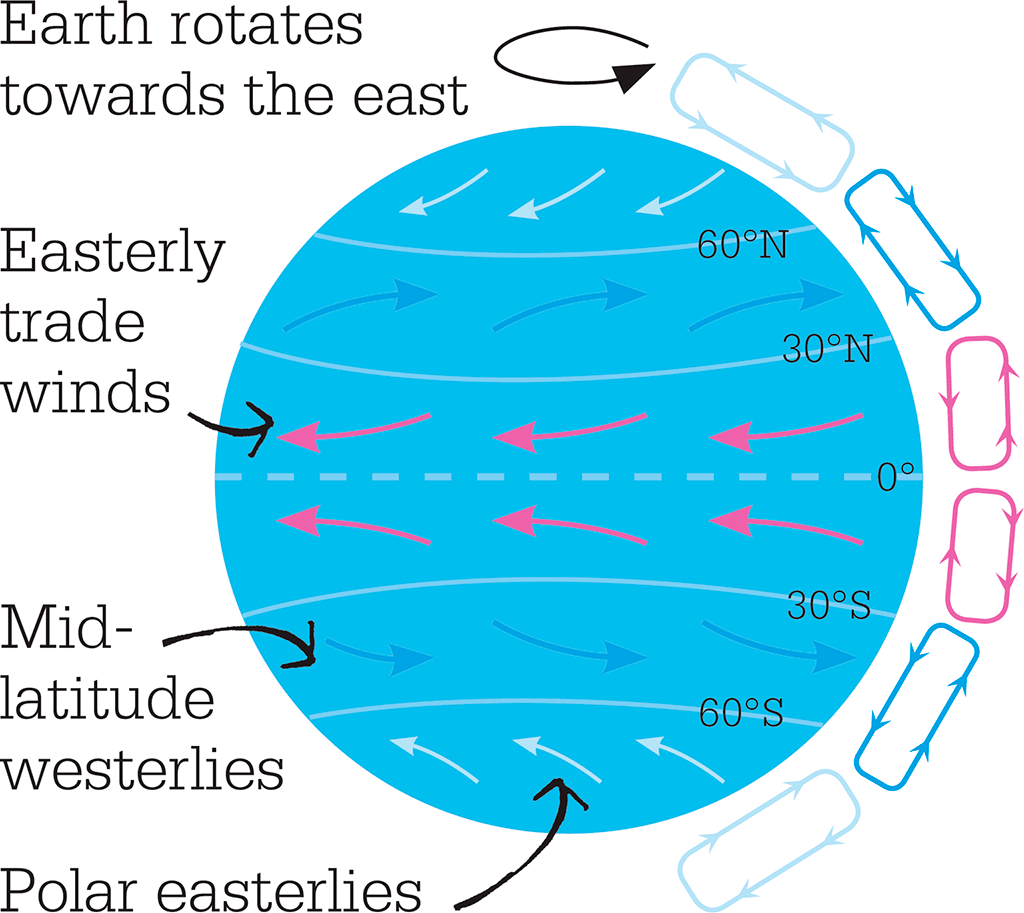
IN CONTEXT
Meteorology
1616 Galileo Galilei points to trade winds as evidence of Earth’s rotation.
1686 Edmond Halley proposes that the Sun travelling west through the sky causes air to rise and be replaced by winds from the east.
1793 John Dalton publishes Meteorological Observations and Essays, which supports Hadley’s theory.
1835 Gustave Coriolis builds on Hadley’s ideas, describing a “compound centrifugal force” that deflects the wind.
1856 American meteorologist William Ferrel identifies a circulation cell in the mid latitudes (30–60°) where air pulled into a low-pressure centre creates the prevailing westerly winds.
By 1700, it was known that persistent surface winds, or “trade winds”, blow from a north-easterly direction between a latitude of 30°N and the equator at 0°. Galileo had suggested that Earth’s eastwards rotation made it “get ahead” of the air in the tropics, so the winds come from the east. Later, English astronomer Edmond Halley realized that the Sun’s heat, at its greatest over the equator, causes air to rise, and that rising air is replaced by winds blowing in from higher latitudes.
In 1735, English physicist George Hadley published his theory on trade winds. He agreed that the Sun causes air to rise, but rising air near the equator would only cause winds to flow towards it from the north and south, not from the east. As the air rotates with Earth, air moving from 30°N towards the equator would have its own momentum towards the east. However, Earth’s surface moves faster at the equator than at higher latitudes, so the surface speed becomes greater than the air’s speed and the winds appear to come from an increasingly easterly direction as they near the equator.
Hadley’s idea was a step on the way to understanding wind patterns, but contained errors. The key to the deflection of wind direction is in fact that the wind’s angular momentum (causing it to rotate) is conserved, not its linear (straight-line) momentum.

Wind patterns result from Earth’s rotation combined with circulation “cells” as hot air rises, cools, and falls in polar cells (shown in grey), Ferrel cells (blue), and Hadley cells (pink).
See also: Galileo Galilei • John Dalton • Gaspard-Gustave de Coriolis • Robert FitzRoy